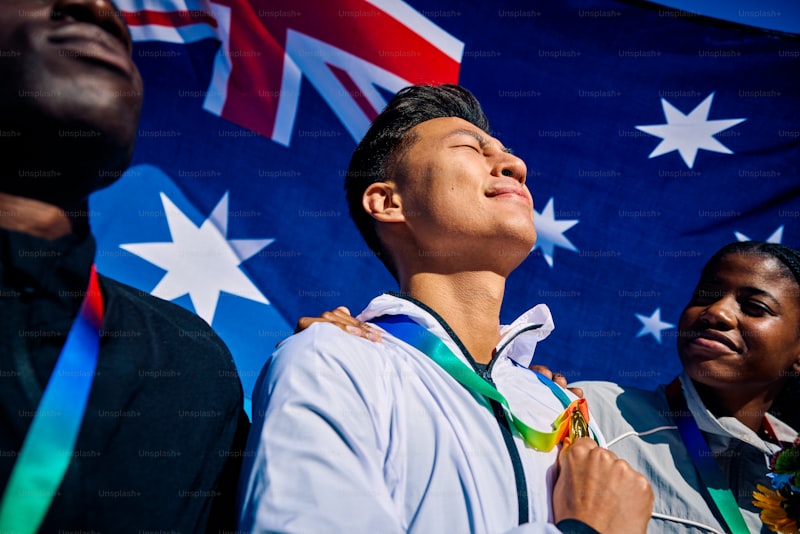Exploring Inclusive Ceremony Options: Embracing Diversity in Celebrations
In today's world, the importance of inclusivity cannot be overstated. As society becomes more diverse, so do the ceremonies that mark significant life events. Whether it's weddings, graduations, or other milestones, Inclusive Ceremony Options have become vital for ensuring that everyone feels valued and celebrated. This article explores various approaches to creating inclusive ceremonies, practical tips, and significant considerations, and ultimately highlights why these options matter.
Understanding Inclusive Ceremony Options
Inclusive Ceremony Options refer to practices and arrangements that allow individuals from different backgrounds, beliefs, and identities to participate fully and meaningfully in ceremonial events. This concept encompasses various elements, such as cultural traditions, religious customs, gender identities, and accessibility considerations. The goal is to create a welcoming environment for all guests and participants.
Why Inclusivity Matters
Inclusivity in ceremonies fosters a sense of belonging and respect. It acknowledges the rich tapestry of experiences and perspectives that each individual brings. By embracing Inclusive Ceremony Options, event planners and hosts can:
- Enhance Participant Engagement: When guests see their identities represented, they are more likely to connect and engage with the ceremony.
- Create Memorable Experiences: Inclusivity can lead to unique and memorable ceremonies that reflect the diversity of attendees.
- Promote Understanding: Inclusive practices encourage participants to learn from one another, fostering empathy and understanding.
Types of Inclusive Ceremony Options
Inclusive Ceremony Options can vary significantly depending on the type of event. Here are some popular options for different ceremonies:
Weddings
Weddings are often deeply personal celebrations that reflect the couple's beliefs and backgrounds. To enhance inclusivity, couples may consider the following:
- Cultural Elements: Incorporate traditions from each partner's culture, ensuring both families feel represented.
- Gender Inclusivity: Choose language in vows and readings that is gender-neutral and respectful of all identities.
- Accessibility: Ensure the venue is accessible for guests with disabilities, with necessary accommodations such as seating and transportation.
Graduations
Graduation ceremonies are a significant milestone in individuals' lives. To promote inclusivity:
- Language Translation: Provide translation services for non-English speaking guests.
- Religious Considerations: Offer space for prayers or blessings from various religious backgrounds to acknowledge diverse beliefs.
- Visual Representation: Celebrate different cultures through flags, clothing, or presentations during the ceremony.
Community Gatherings
Community events, such as festivals and holidays, must also prioritize inclusivity:
- Diverse Participatory Activities: Include activities that resonate with various cultural practices and traditions.
- Food Options: Provide diverse and dietary-restricted food options to accommodate all attendees.
- Environmental Considerations: Ensure that venues and activities are eco-friendly and accessible to all community members.
| Type of Ceremony | Inclusive Elements |
| Weddings | Cultural Elements, Gender Inclusivity, Accessibility |
| Graduations | Language Translation, Religious Considerations, Visual Representation |
| Community Gatherings | Diverse Activities, Food Options, Environmental Considerations |
Practical Tips for Planning Inclusive Ceremonies
Planning an inclusive ceremony requires thoughtful consideration and planning. Here are some practical tips to help you get started:
- Consult with Others: Engage with diverse individuals and communities to understand their needs and preferences. Open dialogue can provide valuable insights that enhance inclusivity.
- Be Mindful of Language: Use inclusive language in invitations, programs, and speeches. Avoid assumptions about gender, background, or beliefs.
- Educate Yourself: Make an effort to learn about various cultures, traditions, and accessible practices. Incorporate findings into your planning process.
- Feedback Mechanism: Create opportunities for feedback post-event to gather suggestions for improvement and future inclusivity efforts.
Challenges and Solutions
While aiming for inclusivity, organizers may encounter challenges. Here are common obstacles and strategies to overcome them:
Challenge: Budget Constraints
Creating inclusive options often requires additional resources.
Solution: Prioritize inclusivity in budgeting from the start. Seek community partnerships or sponsorships to alleviate costs.
Challenge: Resistance to Change
Some individuals may resist adopting inclusive practices due to traditional views.
Solution: Educate stakeholders on the benefits of inclusivity. Share success stories and the positive impact on community dynamics.
Challenge: Limited Knowledge of Inclusive Practices
Many event planners may lack understanding of how to implement inclusiveness.
Solution: Provide training workshops on inclusivity and access resources to learn about best practices.
Conclusion
As we explore Inclusive Ceremony Options, it's clear that embracing diversity in our celebrations is not just a trend; it is a vital component of building inclusive communities. By reflecting the rich tapestry of identities and experiences in our ceremonies, we create spaces that invite joy, understanding, and respect. It’s essential to keep pushing for inclusive practices, ensuring all voices are heard and acknowledged. As you plan your next ceremony, take these suggestions to heart, and remember that inclusivity enriches every celebration.
In summary, when arranging ceremonies, consider cultural traditions, accessibility needs, and create an environment that encourages all attendees to participate to their fullest. By doing so, we can transform our events into genuine celebrations of diversity and unity. Always keep in mind that planning with inclusivity in mind can create meaningful, joyful experiences for everyone involved.
